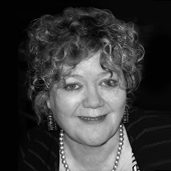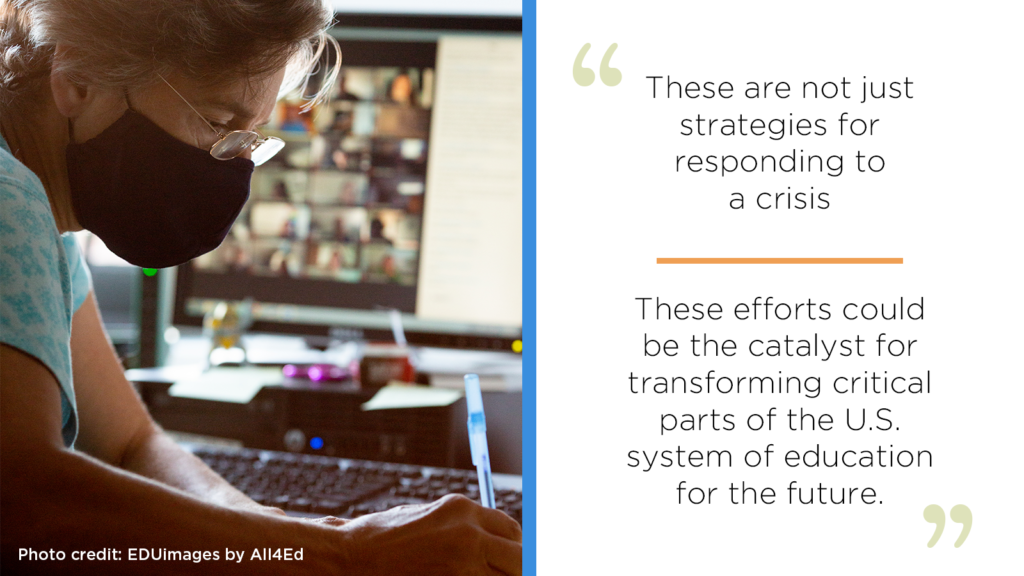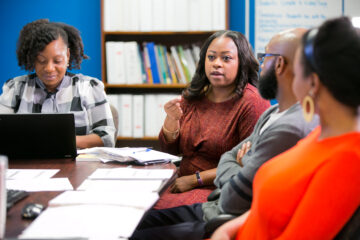
Ann Borthwick is Learning Systems Architect at NCEE and in this role she works with districts, schools, and teachers across the United States to rethink how they organize teaching and learning to enable more students to succeed. Over the past year, she has followed how districts have responded to the challenges and opportunities posed by the coronavirus pandemic.
As hard as it is to say, amid all of the tragedy and disruption of the pandemic, there have been some bright spots. Among those is the way many districts have responded to the need to support their teachers by capitalizing on the opportunity for flexibility provided by virtual learning to reserve a day each week for professional learning, including mutual social and emotional support as well as collaborative planning and reflection. These bright spots among the countless responses to the pandemic are often the same strategies that our research has identified as common in the highest-performing education systems in the world. The challenge in the U.S. is how to maintain that commitment to professional learning as students return to school full time.
One district with whom we’re working is figuring how to maintain that time but distribute it over the course of the week. District leaders have invested in establishing a Plan-Do-Study-Act (PDSA) cycle of professional learning and want to implement it across the district. And they have recognized that if they want to realize its potential, they need to provide substantial time within the school day for teacher collaboration. Currently, they are working on the logistics of providing each elementary class teacher with about one hour each day of non-teaching time in addition to their regular prep and lunch by means of strategic scheduling of art, music, library, and physical education, and the possible addition of a Maker Space session for students.
As they have thought through these plans, they have begun to think about how to accommodate different ways of enabling teachers to collaborate within the overall PDSA approach. For example, the five hours per week could be allocated as two hours on one day to allow teachers (on a grade level or in a content area) to engage in deep and productive data analysis and discussion, and single hours on three other days scheduled at different times of day to allow teachers to observe one another or to combine in smaller groups for planning, or to work individually on tasks such as studying data gathered in their class, consulting with a district-based specialist on the needs of a specific student, or read research on a relevant topic.
Opening the door to distributing teacher professional learning time differently on different days of the week adds layers of complexity to scheduling, but also allows for planned nuances into the schedule that may improve the quality of teaching and learning. For example, in middle or high schools, period 6 math might become period 1 math on Monday, period 3 math on Tuesday and so on. In this scenario, period 6 math, when everyone is tired, might happen for any one class only one day of the week.

Another district is expanding professional learning time during the day by implementing specialist teaching in math not only in the upper elementary grades but all the way from kindergarten up. District leaders have been dissatisfied for years with their students’ performance in math and tried changing curricula among other strategies to yield improvement with little to show for it. They have realized that many of their class teachers are stronger on literacy than math and actually do not much like teaching math and, at the same time, they have several teachers who love math and are willing to specialize. They’ve figured out a structure that will have more than one specialist for each grade and each specialist teaching across two or three grades. They have reserved resources for these teachers to work intensively with the district math coordinator to build a clear vertical sequence of concept development and to have ample planning time together in the summer as well as collaborative time during the school day. They are scheduling grade level team meetings twice each week and common collaborative planning time for the full math team once each week. On the other two days, teachers will have time to observe one another’s classes. The longer-term plan is to explore looping—the practice of having teachers stay with students for two or more years—for math with the goal of making it possible for each student to have only two or three math teachers from kindergarten through 5 (K-2, 3-5 or K-1, 2-3, 4-5).
Looping is the centerpiece of some individual schools’ planning for 2021-22. Why now? Because students and teachers have had such a disrupted year that efforts to provide continuity will help to make the new year more productive. Their thinking is that keeping classes together will make for a smoother transition for students to full-time in-person learning in the new school year. And keeping teachers with their classes from this year will give them a running start for the new year. They expect in any event to need to build a bridge between this year’s curriculum and the expectations for next year, while recognizing that the teachers will need time and support to craft those plans and ongoing provision of time during the day to share their experience and build their expertise in responding to their students’ learning needs. They will do that planning though with the advantage of already knowing the students in their classes and being able to get to work from day one in the fall. It’s not hard to see how this would add about a month of effective learning time to the start of the new school year. Moreover, teachers who are keeping their students from this year to next do not have to enter the process of separating in May. They have every reason to keep working to the last day.
Only some teachers have jumped at this opportunity this time around. But that’s enough to initiate the practice of looping and explore the conditions that will contribute to its success.
One of the highlights of the past year, reported by some principals and superintendents, has been the growth of stronger home-school relationships. Looping from this year to next is a means of sustaining and growing these relationships. In the longer term, looping can help teachers and schools continue to build strong home-school relationships that are sustained over two years (or, possibly, three or more years if a school were to explore Finland’s approach where teachers stay with students for most of elementary school). A further byproduct is the opportunity to generate productive summer learning, through summer school or simply by crafting some reading and other practical assignments for students over the summer in a setting in which the teacher, the students, and their parents share in the knowledge that the work the students do arises from and will be folded into their continuing learning.
When people start to create professional learning time during the school day new possibilities for reorganizing teaching and learning emerge. The schools described here have coupled expanded professional learning time with the creation of specialists to address curriculum areas of need or tried out looping to build more continuity and consistency into students’ learning experiences and teachers’ work. There is no better time than now for releasing that creative energy and trying out better ways to support student learning and teacher learning in the quest for a new normal rather than simply recreating what we used to do. These are not just strategies for responding to a crisis; these efforts could be the catalyst for transforming critical parts of the U.S. system of education for the future.




